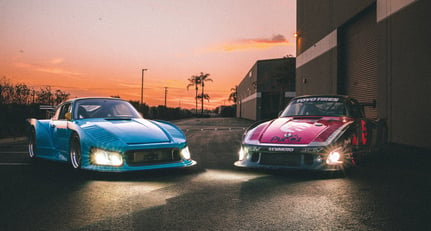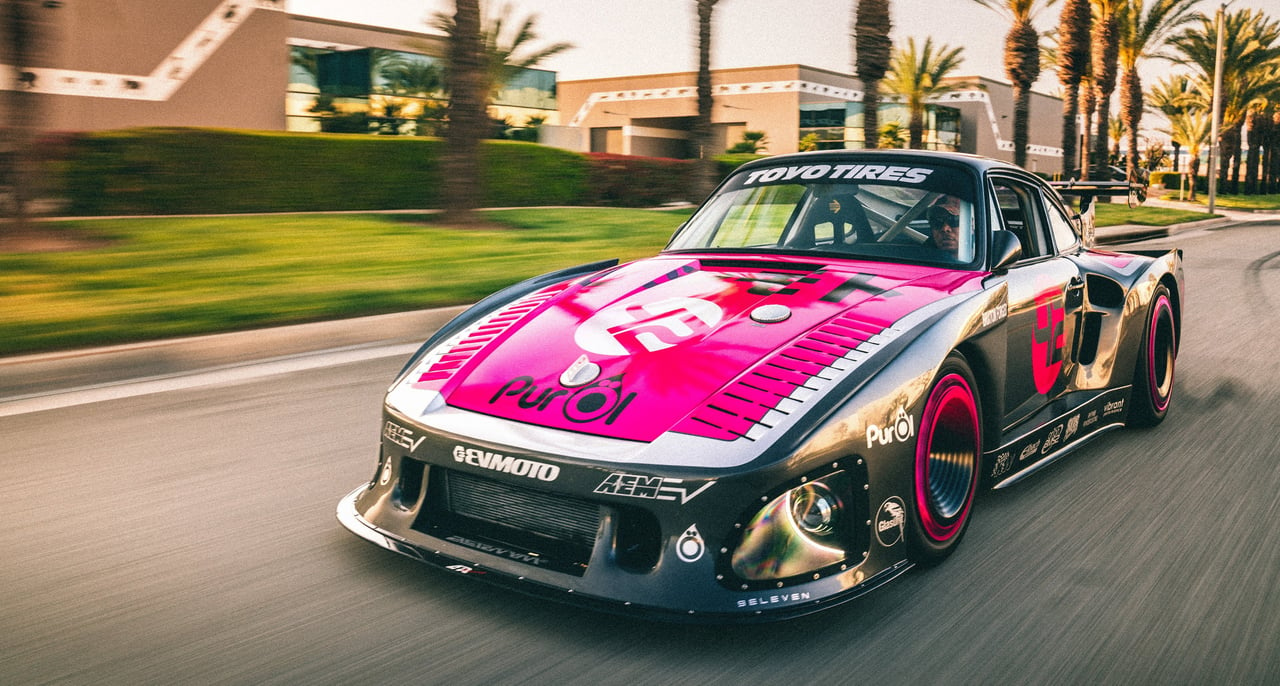
Bisi Ezerioha is somewhat of a celebrity in the Los Angeles car tuning scene. While he first gained notoriety for his ballistic tuned Honda’s - which include a 1000hp Odyssey minivan - and more recently for his unhinged Porsches, the story of how he first entered the tuning scene is arguably even more fascinating.
Born into a family of scientists in Nigeria, Bisi had a mechanical fascination from a young age. While most parents would steer youngsters away from taking apart bits of technology, his geologist father and biochemist mother encouraged it, on the condition that he would put whatever he disassembled back together, of course. As Bisi matured, this curiosity developed into an affinity for the sciences, with Bisi skipping grades thanks to his talent and hard work. At the age of 14, Bisi passed his A-Level exams, and with his parents’ permission, he travelled to America to study engineering at university. While both of his parents were understandably too busy with their work to accompany the young Bisi to the States, luckily his father had some old friends living in a lovely Los Angeles neighbourhood which he remembered from the 1960s.


However, as it turned out, the neighbourhood of Compton had changed somewhat by the time Bisi touched down at LA International airport in 1989. So, as Bisi studied engineering by day, he would apply his learnings to street racing by night. “That’s how I got the nickname ‘Bisimoto’, from street racing,” he tells us. “Unlike today, back in the early 1990s, there weren’t many parts available if you were modifying Japanese imports. I used my experience from school and chemical engineering and applied it to my 1988 Honda CRX. Don’t get me wrong, I messed up a lot - I blew up a tonne of engines - but that didn’t discourage me.” Bisi describes himself as: “Someone who loves technology, who thinks outside of the box and who isn’t afraid of the unknown”, and it’s that lack of fear to which Bisi attributes his success. Three and a half decades after a Nigerian teenager landed in LA, Bisi is still throwing caution to the wind and crafting some of the wildest, most unhinged builds in this part of the Milky Way. We caught up with the genius engineer at his LA-based workshop to see the latest and greatest Bisimoto builds for ourselves. It’s safe to say, we weren’t disappointed!
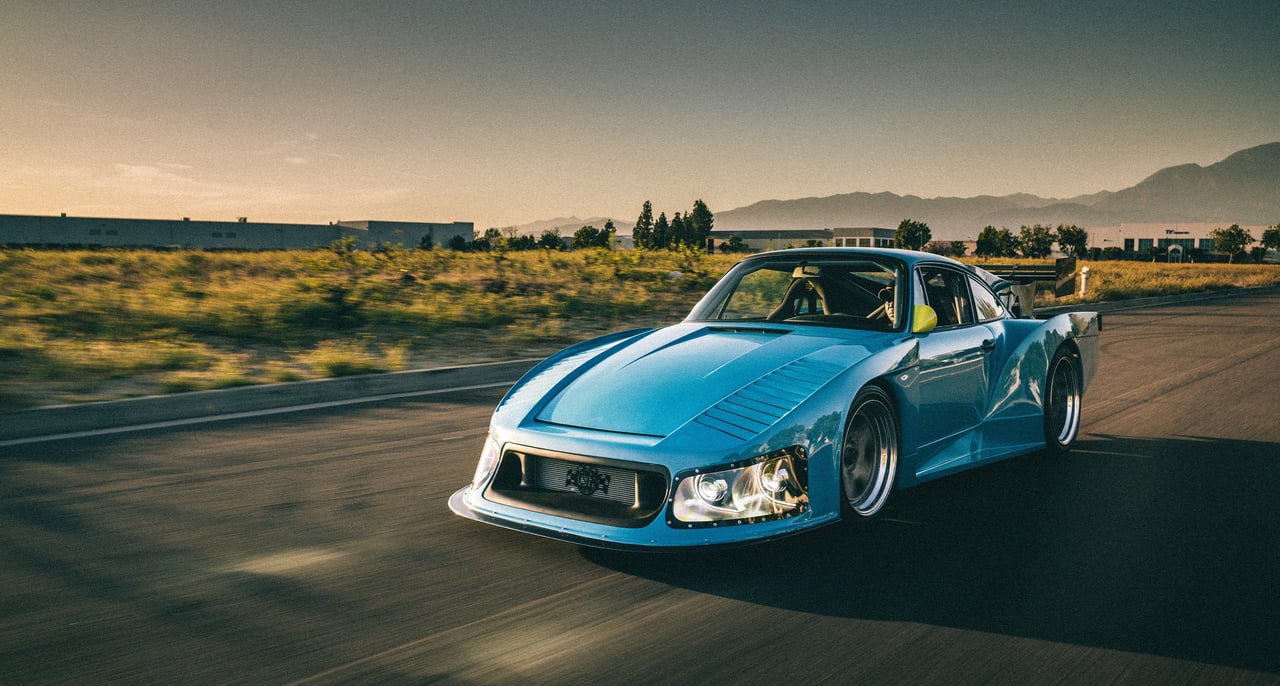
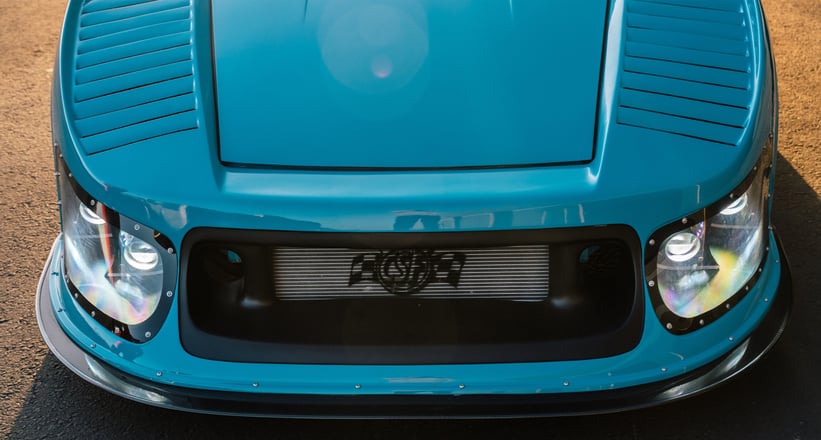

Bisi, it’s a real privilege to have the chance to speak to you. You have two 935s here, and while they’re both quite similar at first glance, we understand they’re very different underneath. Could you tell us a bit more, starting with the blue car?
“The blue car is a tribute to the American response to the Kremer’s 935s. Kremer offered 935s to the public when the Porsche factory would reject certain customers, and the Porsche 935 M16 was America’s response to the Kremer 935s. It has an American International Racing (AIR) bodykit, which was designed by James Garner, the owner of AIR. He gave a really interesting look to the 935: it has dual headlights and a body that’s not only very sleek, but one that also assists with aero. It’s a really clever design and much longer than a K3, which was really exciting for me because I really want to be known as the 935 guy in the United States, and this was something I felt a lot of people didn’t really know much about.”

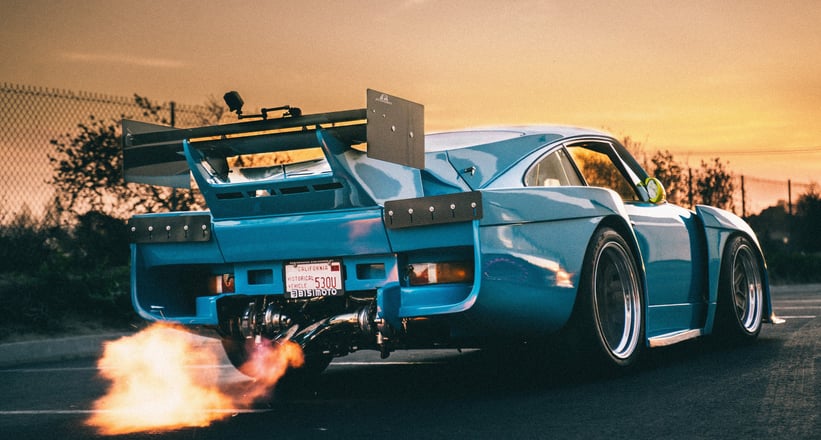
“This car’s chassis is derived from a 1975 911, which was something I had in my arsenal. It also allowed me to exploit a bit of a loophole, because in the States, if your car is pre-1975, it’s emissions exempt, so this chassis is road legal even though it runs on petrol. Long story short, while I love the air-cooled 935 race cars of yore, as you can imagine, I’m not a huge advocate of old technology, so in that vehicle I impregnated a 903bhp twin-turbo M96 water-cooled flat-six from a 996. One thing about the M96 that people sleep on is the head flows amazingly well, so you can make a lot of horsepower reliably without a lot of boost.”
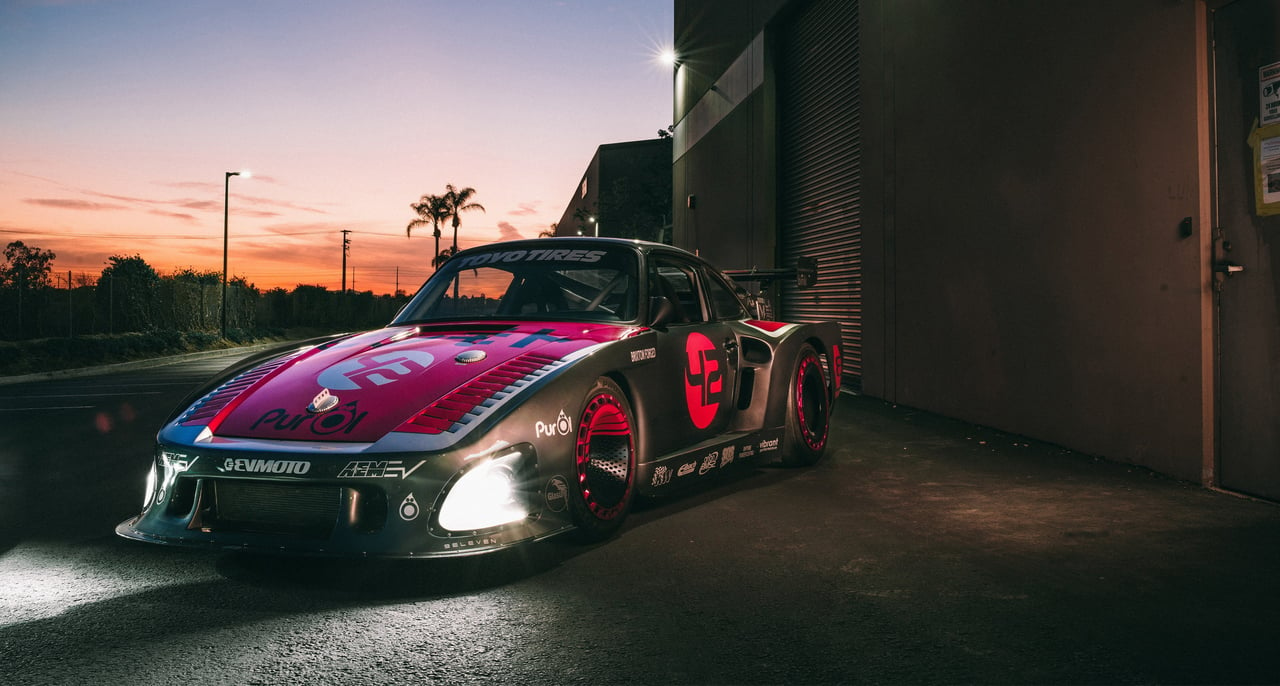
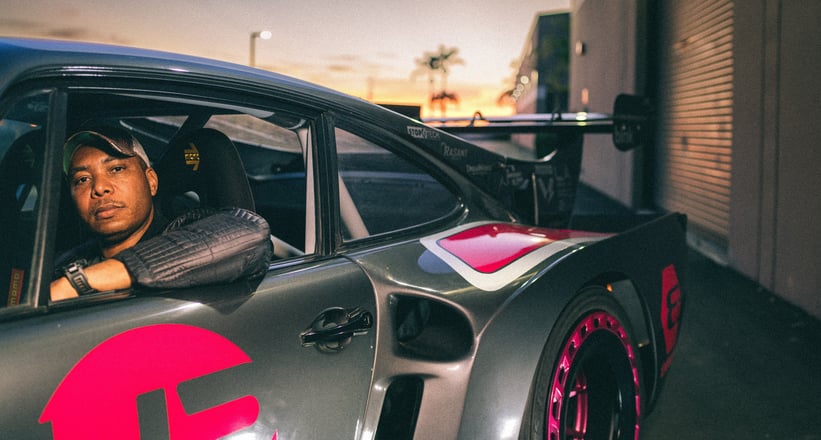
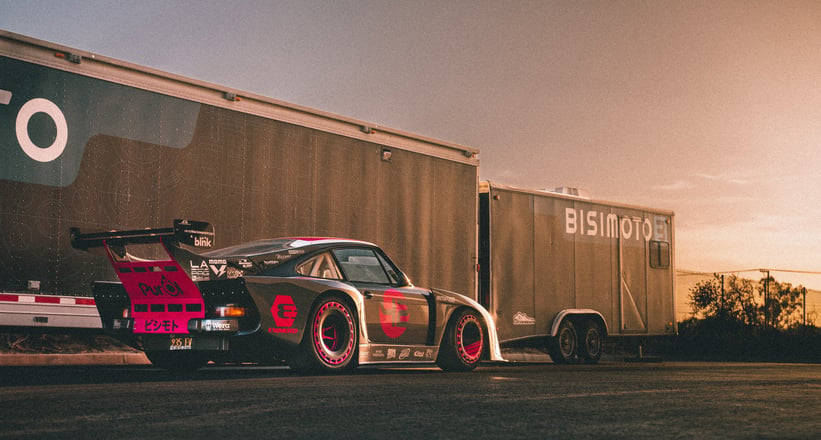
There’s no denying it, your 935 M16 is a monster! However, you have an arguably even more interesting car here today too. Could you please tell us how your 935 K3V came into existence?
“Believe it or not, the 935 K3V makes some 300 horsepower less than the M16, but it has a faster 0-60 time. That vehicle was built before the M16 and started as a standard 1984 SC initially; I had the car in my facility and needed to do something with it. The marketing manager of one my technical partners approached me - I had built cars for their booths at SEMA in the past - and they wanted me to do something crazy with a Porsche. I had found original Kremer moulds from one of the curators in Monterey, so I said why don’t we do a Porsche 935 - nobody had seen a street-legal 935 before - and over a handshake we agreed on a figure.”
“So I started the build without taking compensation, which was extremely expensive for me to do. The body was grafted onto the SC chassis, and everything was looking good. It was supposed to be petrol, and I was going to put twin-turbochargers on a 964 engine connected to a sequential shifter; the works. Then, the gentleman who I shook hands with was fired from the company for embezzling funds, and our project was put on hold. So, I was stuck with this chassis that I had invested a tonne of time and money into with no compensation, and it was just sitting as a body-in-white at a paint shop. I didn’t know what to do with it.”
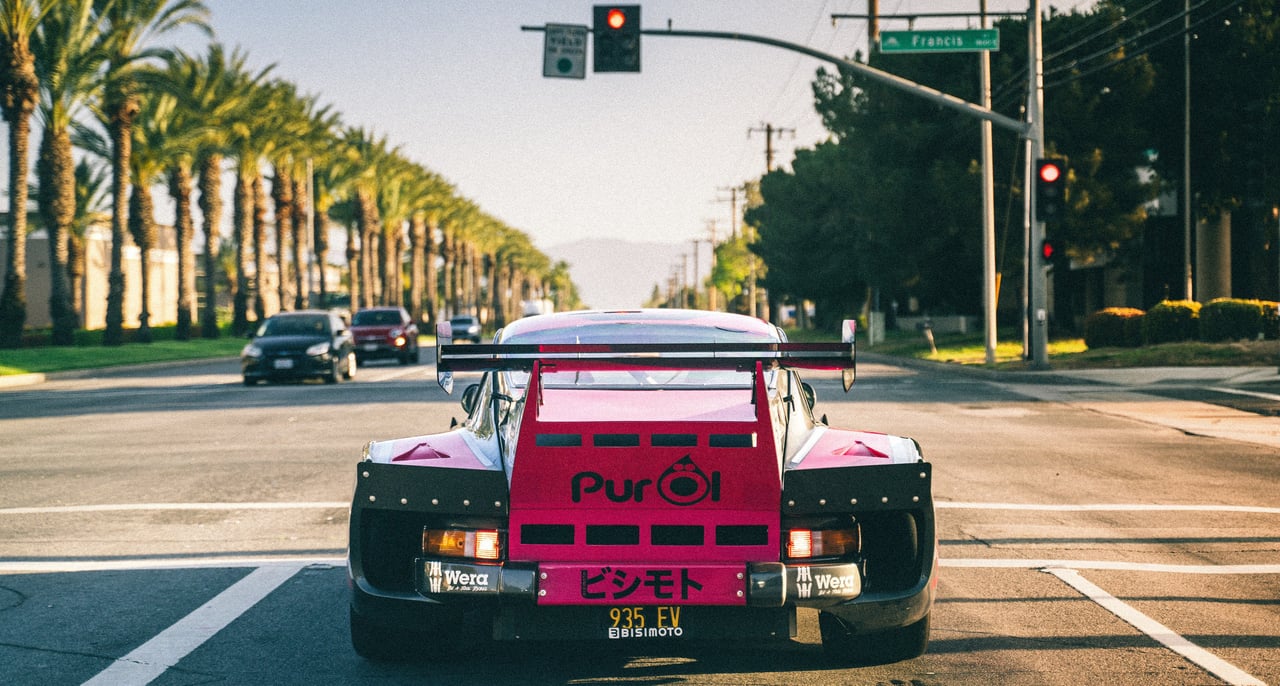
That certainly sounds less than ideal! How did you turn that terrible luck into the success that the 935 K3V has become?
“Well, we built a 700hp Hyundai for Harmon Kardon’s booth at CES - the major tech convention in Las Vegas - and I was given the opportunity to attend the show. I was simply blown away by what I saw there: the booths were bigger than SEMA, and the budgets were ten times what I had ever experienced. Five years ago, I was a diehard petrolhead, and I thought EVs were for tree-huggers and people with hemp sandals. However, seeing all my partners with electric vehicles in their booths, I realised I needed to embrace it whether I liked it or not. So, I decided to look on the bright side and use the chassis I had to make an electric 935.”
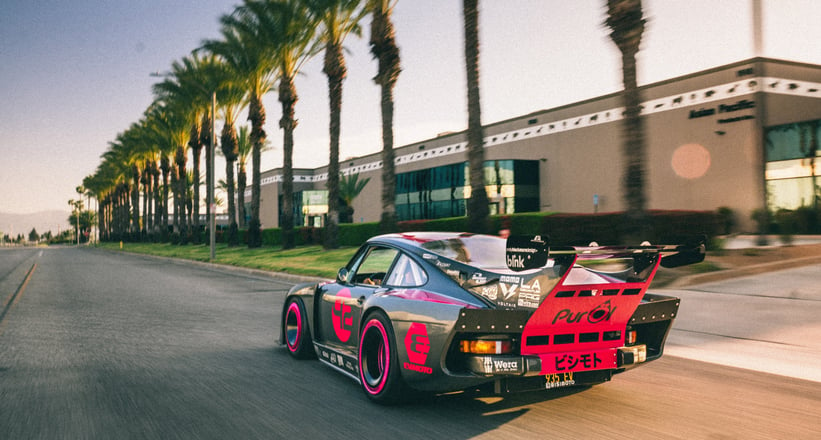
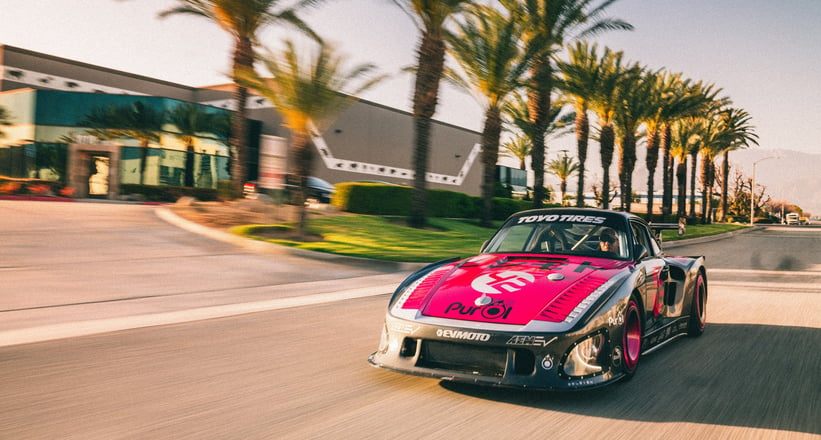
“To date, the 935 K3V was the most expensive car I’ve ever built, because I made so many mistakes. I talked to friends from all over the industry, and everyone gave me the wrong advice, so I bought all these components I couldn’t use. After 11 months and many broken driveshafts, I finished building the car: it has a 636hp single-drive custom AC 3 phase induction motor connected to a single speed gearbox. The first time I drove it, I almost urinated on myself. It does 0-60 in 2.06 seconds! The fact that the torque is so incredible and the sound has this unique supercharger whine made me an EV advocate overnight; it was the most amazing thing I had ever driven.”
“It was unfortunate that my education with EVs wasn’t based on personal experience, but what I heard from others. A lot people say electric cars are boring, but that’s untrue. When you drive a proper performance EV, it is totally different. The key word is 'different', not bad, but different. There’s still a soul, and you even get more feedback in certain areas. Five years ago, I would have kicked you out of my shop for mentioning electric cars; now the majority of cars in my facility for customers are EVs.”

Aside from the crazy bodykit, one of the first aspects of the K3V that caught our attention was that stunning paint job - what’s the story behind the livery?
“There was a Japanese racing team that raced Porsche 935s called Gozzi. For me, as someone who used to work on Japanese automobiles, there was a connection there, and through my relationship with EA, I met this very talented graphic artist called Andy Blackmore, who’s a great guy. I elected his support and told him that Gozzi was a team I admired and that I wanted to pay a nod to them, but I also wanted to make it very Bisimoto - a lot of my cars use very metallic vibrant colours - so I didn’t want to use Gozzi’s pink and white colour scheme. Andy came up with the concept of the Porsche slate grey with that vibrant pink; it was all his design. He did a great job of drawing that up for me, and from his drawing we brought it to life.”
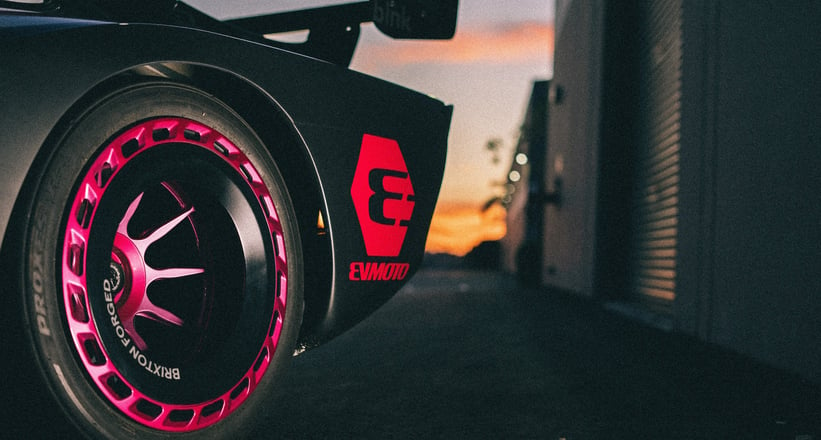
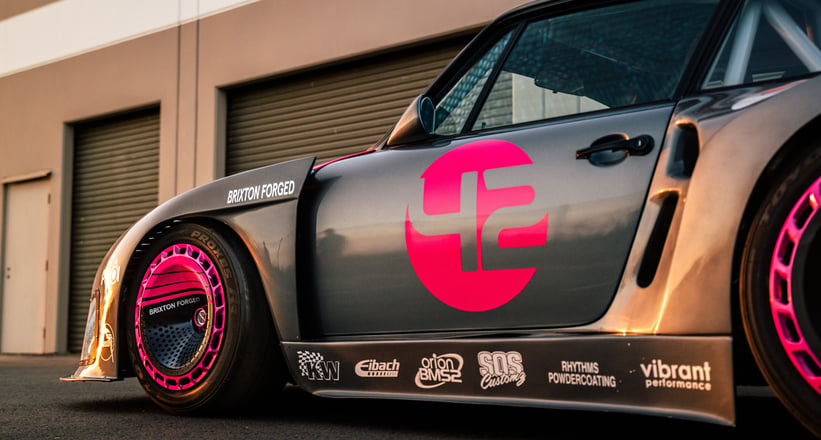
“I love ‘Hitchhiker’s Guide to the Galaxy’, so you might notice a few easter eggs, like the number 42: the Answer to the Ultimate Question of Life, the Universe and Everything. The car also has a special mode, which I call ‘Infinite Improbability Mode’ which ignores all of my safety protocols: I have used it twice and I’ll never use it again, as I almost crashed into a tree last time. There’s a switch inside to activate it, and when you do, the two mice from the movie come up on the screen. It’s the little things like that which I love.”
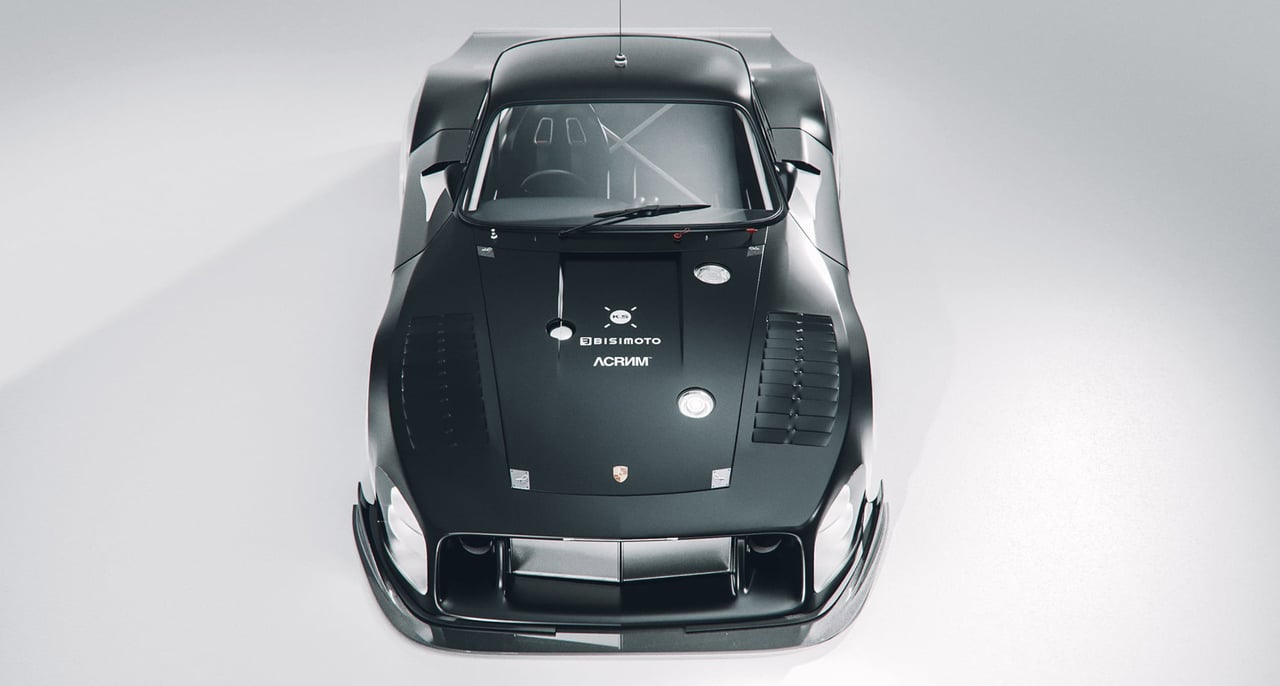
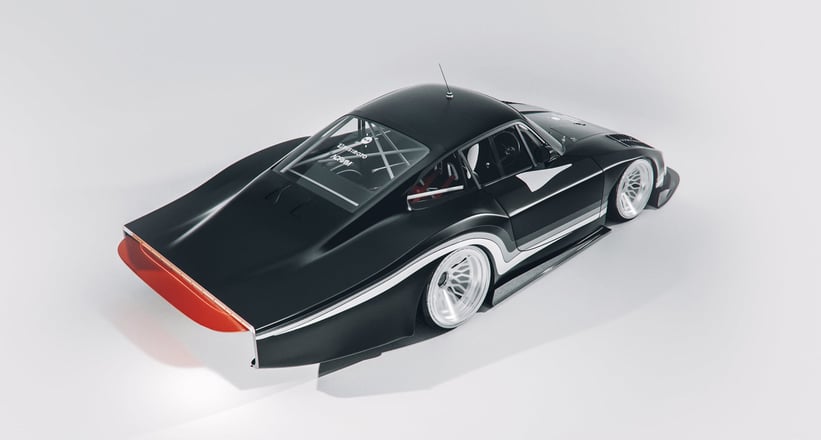
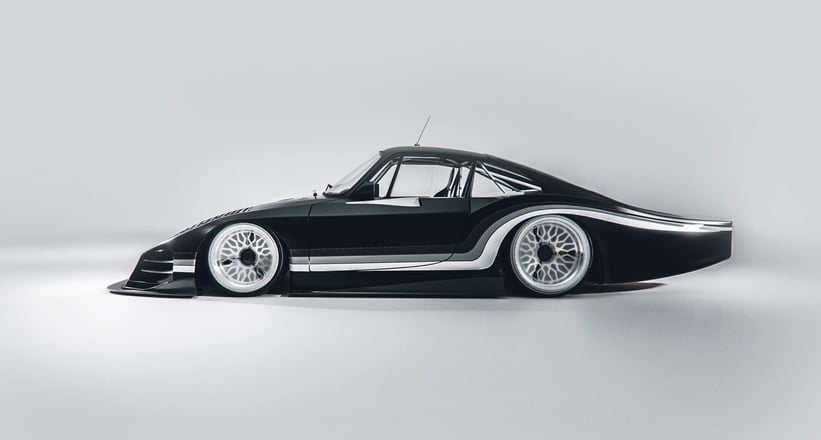
You’ve just unveiled the absolutely awesome 935 MOBY X. What is different about it and how has that car evolved from the 935s we spent time with?
“Everything! The K3V is pretty much the predecessor to MOBY X, and MOBY X is the result of everything I learned with the K3V. The biggest change is the battery system. The K3V used air-cooled batteries, believe it or not, and I realised I needed better thermal cooling, so the MOBY X has water-cooled batteries. I also added fast-charging from the start. MOBY X was a clean slate, so what you see was what I wanted to do out the gate. On MOBY X, everything is totally reversible, and there’s no cutting at all. It was also very important to me to make it look more OEM, not aftermarket, so even the pedal assembly on the MOBY X looks factory, it’s just missing a clutch pedal.”
“There has never ever been a street-faring Moby Dick. I found moulds from the original Porsche 935 Moby Dick too; the only thing this doesn’t have is a crazy wing. What I noticed when I launched the K3V at SEMA in 2019 was that the wing's angle of attack was great for creating downforce, and it looked cool, but my range went to crap when driving on the road. So, when I built the MOBY X, I wanted to improve on the range of the K3V. Even though it’s similar from a hardware perspective, I wanted it to be more fluid and reduce the number of apertures around the car. NACA ducts are a great way of creating cool air without a massive drag penalty, and all of the intakes on the car are functional. It’s huge! It’s much larger than any of the other cars I’ve built, and it barely fits in any of my trailers - it’s out of control. It really is the ultimate in terms of what I learned from my earlier builds to date.”

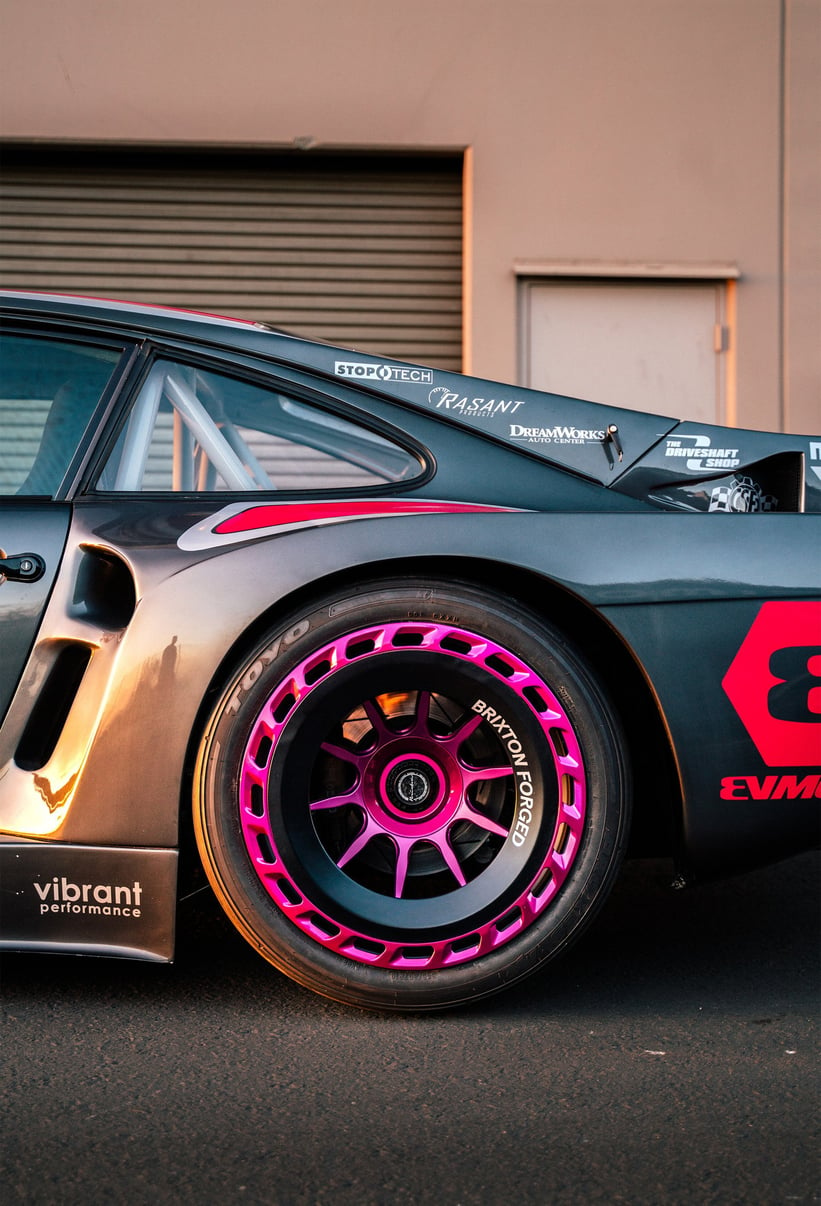
How do you go about differentiating the driving experience of your EVs from other products on the market?
“As I mentioned to you earlier on, individuals in this EV conversion space are really engineers first. If you look around at how these cars are built, some have screens to turn things on, others have a multitude of switches that the operator has to understand. When I build my performance EVs, I do it so a grandmother could drive them if they wanted to. All those sequences are still happening, but I use my power distribution modules to my advantage.”
“I bring a simplified, clean, nostalgic experience with modern technology. I try to give a nod to the old while embracing the new. Recently, I did a 100 mile Porsche rally in the K3V and it was the only EV there. While others had to pull over to get petrol from the 100 mile climb, I didn’t because I recharged on the way down using its regenerative braking. I want to bring that opportunity to enthusiasts, so they can focus on what they love: driving!”
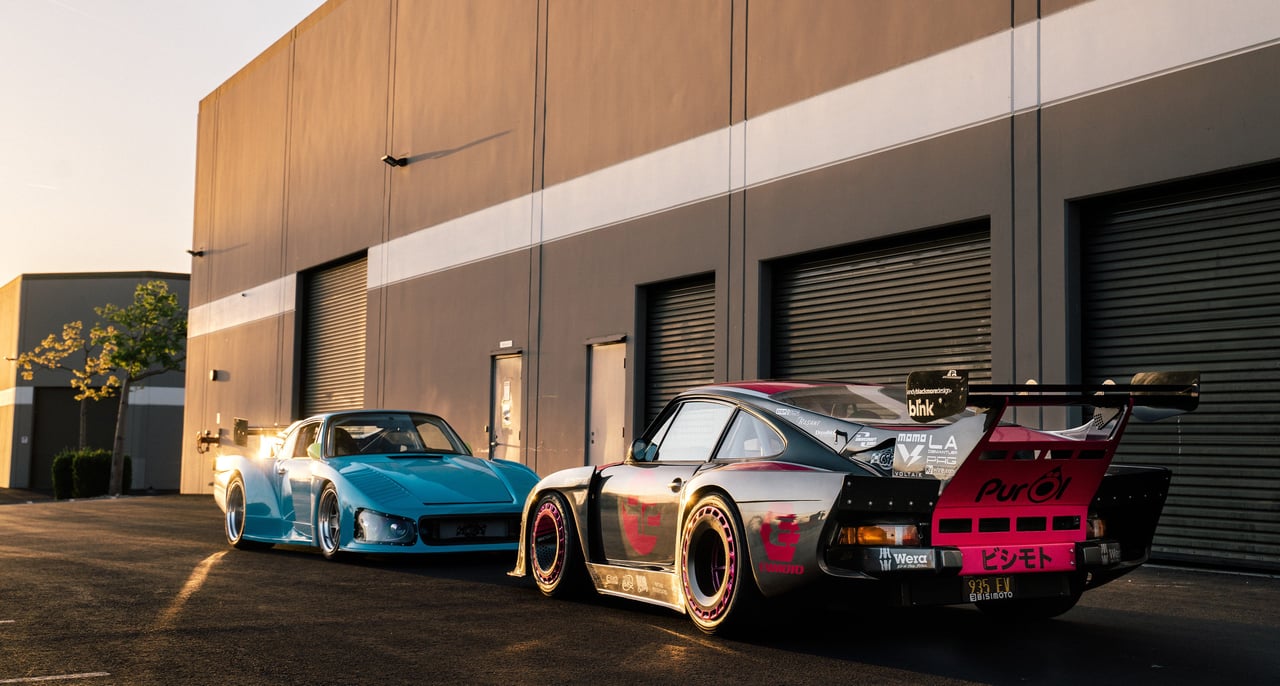
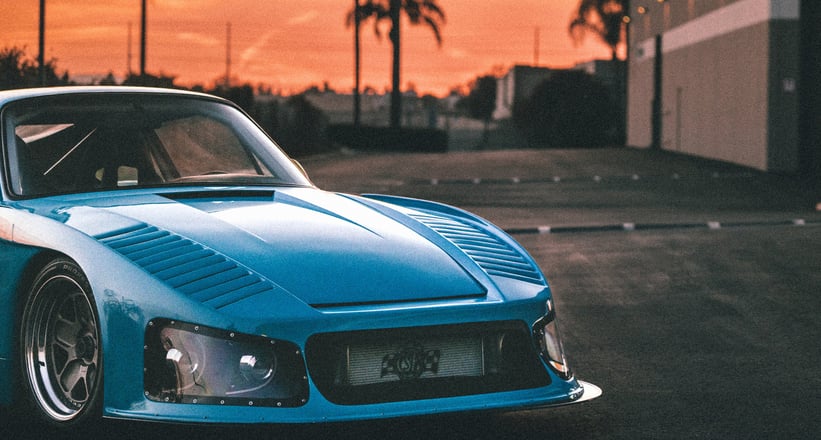

Lastly, what does the future of Bisimoto look like? Do you see your company moving further in the direction of EVs, or will there always be an old-school ICE tuning component to your business?
"I will never let go of petrol completely, so if there’s a client who wants my help, or if we’re servicing cars we built, we’ll always be there. Performance will always be our standpoint; taking cars that are pretty exciting and making them spectacular will still be our thing. However, we'll always embrace new technology. If tomorrow brings hydrogen, we’ll do it! One thing you constantly see from us is cool cars with historical significance infused with modern technology, whether it’s a Porsche 911, a Caterham, or a Rolls Royce Silver Shadow. It doesn’t have to be EV; we’re interested in any technology that results in an amazing driving experience for our customers.”
Photos by Huckleberry Mountain for Classic Driver
Images of MOBY X by Khyzyl Saleem
